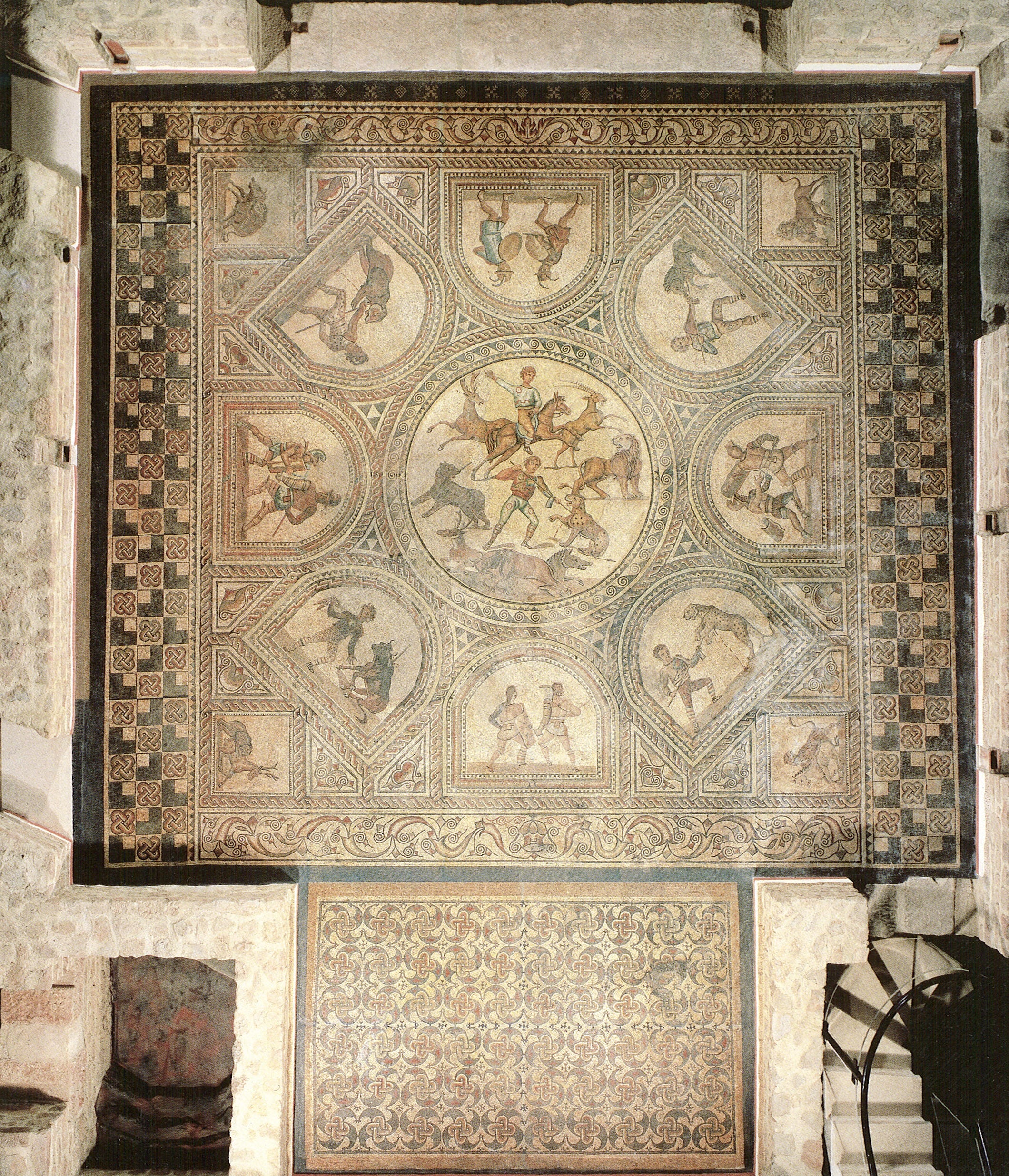Nicole High-Steskal will be defending her dissertation later this week and was kind enough to offer us a sneak peak of her research with the following abstract. Best of luck on Thursday Nicole!
“Gladiators, animal fights, and public executions of criminals are events generally
associated with the Romans. As part of the munus, these popular events took place over
the course of multiple days and were an integral component of the social and political
life of many communities across the Roman Empire. Floor mosaics and wall paintings
found in areas once part of the Roman Empire impressively attest to the popularity of
gladiatorial combat and animal hunts.
Rather than reduce the images to illustrations of historical narratives, I argue
that depictions of these spectacular events are visual constructs that condense
perceptions of the events into abstracted, abbreviated images. The images do not
function as ‘eye-witness’ snapshots of the events but instead are commentaries on a
multivalent event.
In my dissertation I reevaluate a corpus of 79 known spectacle images dating
from the 1st century BCE to the late 5th century CE. Based on the historical background of the munus, the visual representations themselves, the archaeological contexts of the
representations, and the geographical setting in which such representations occur, I
identify both commonalities among images from the provinces and their regional
variations. The stylistic analysis of the images reveals that the images are formulaic and
were often consciously adapted to fit specific architectural contexts. My reassessment
of the archaeological contexts indicates that the great majority of spectacle images
come from publicly accessible spaces of private houses, including hallways, reception
rooms, and bedrooms, in addition to dining rooms. The distribution of spectacle images
throughout the Roman Empire is surprisingly uneven, with the largest clusters of images
found at three sites: Cos (Greek Islands), Leptis Magna (Libya), and Trier (Germany).
These clusters are the result of local fashions, historical associations, and the presence
of prolific workshops.
In contrast to earlier scholars, I understand the images of spectacle as
celebrations of victory that drew upon established conventions for representing the
munus. My study shows that the images fulfilled a variety of functions that reflected the
social setting, wealth, and identity of a patron, all of which were often heavily
influenced by the regional context.”
_________________________________________________________________________
Have updates of your own to share? Submit them to ipcaanewsletter@umich.edu.



Pingback: Check out the latest news from the students in IPCAA | Kelsey Museum